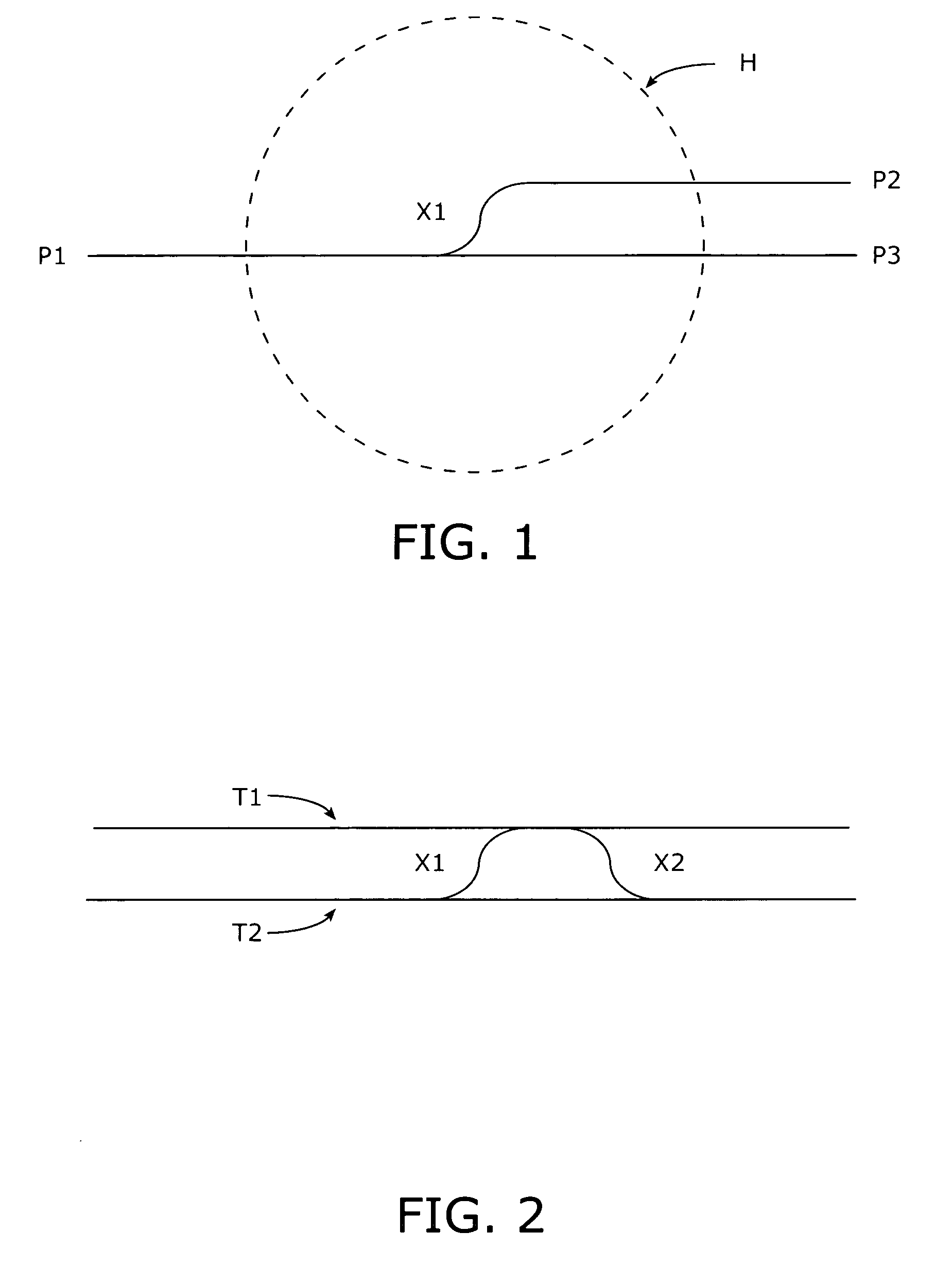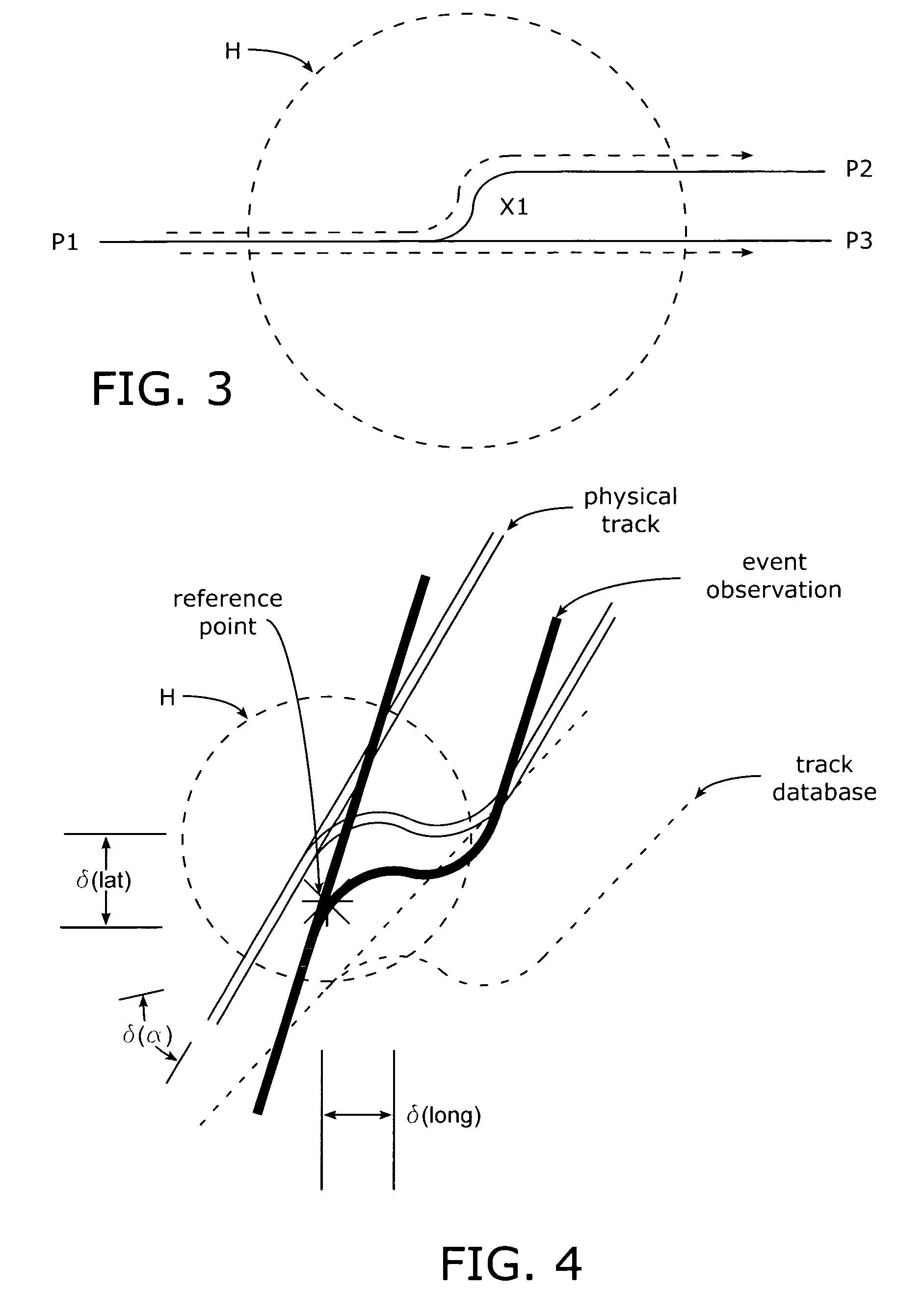Locomotive/train navigation system and method
a technology for locomotives and trains, applied in the direction of navigation instruments, navigation instruments, instruments, etc., can solve the problems of difficult and expensive accuracy ascertainment, non-uniformity of railroad tracks, and difficulty in resolving these disparities sufficiently to resolve to a specific track with a high degree of confiden
- Summary
- Abstract
- Description
- Claims
- Application Information
AI Technical Summary
Benefits of technology
Problems solved by technology
Method used
Image
Examples
Embodiment Construction
[0018]A representative track transition is shown in schematic form in FIG. 1 and includes a track segment extending between a point P1 on the left and a point P3 on the right; additionally, a cross-over section X1 interconnects the track between points P1 and P2 with a track that extends to point P3. The transition X1 can be a controllable switch, for example. Thus, in FIG. 1 a locomotive or train can proceed from point P1 on the left directly through to point P3 on the right or, alternatively, pass through transition X1 to the point P2 on the right. As is known in the art, track databases are maintained that include selected position information for sections of track and transition, features, or points of interest within the track system including latitude, longitude, azimuth (heading), and other information including elevation, inclination, and side-to-side tilt (i.e., roll). In general, these databases possess a coarse accuracy in terms of absolute latitude and longitude. As show...
PUM
 Login to View More
Login to View More Abstract
Description
Claims
Application Information
 Login to View More
Login to View More - R&D
- Intellectual Property
- Life Sciences
- Materials
- Tech Scout
- Unparalleled Data Quality
- Higher Quality Content
- 60% Fewer Hallucinations
Browse by: Latest US Patents, China's latest patents, Technical Efficacy Thesaurus, Application Domain, Technology Topic, Popular Technical Reports.
© 2025 PatSnap. All rights reserved.Legal|Privacy policy|Modern Slavery Act Transparency Statement|Sitemap|About US| Contact US: help@patsnap.com



